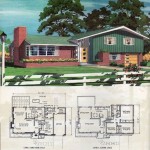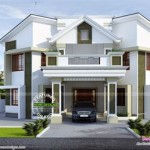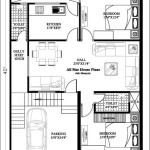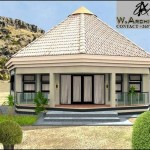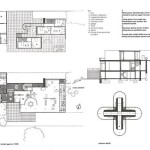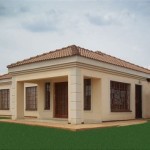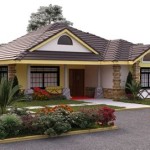Apartment House Plan: An Expansive Guide for Building Multi-Family Living Spaces
#### Introduction: In today's urban landscapes, apartment houses have become an integral part of accommodating diverse residential needs. These multi-family buildings offer a compact and convenient living solution, catering to individuals, families, and professionals alike. Whether it's a towering high-rise or a cozy low-rise complex, apartment houses present unique design challenges and opportunities for architects, developers, and homebuyers. This comprehensive guide delves into the intricacies of apartment house planning, exploring the various aspects that contribute to creating functional and aesthetically pleasing living spaces. #### Design Considerations for Apartment Houses: 1.Zoning and Land Use:
* Zoning regulations play a crucial role in determining the permissible density, height, and setbacks of an apartment house. Understanding the local zoning laws is essential in shaping the overall design and layout of the building. 2.Building Codes and Safety Norms:
* Adhering to building codes and safety regulations is paramount to ensure the structural integrity and occupant safety. These codes cover aspects such as fire safety, accessibility, and earthquake resistance. 3.Site Analysis and Orientation:
* A thorough analysis of the building site is crucial to determine the best orientation for the apartment house. Factors like solar exposure, prevailing winds, and views should be carefully considered to optimize energy efficiency and occupant comfort. #### Planning and Layout Strategies: 1.Floor Plans and Unit Mix:
* The distribution and layout of individual units within an apartment house are critical in maximizing space utilization and catering to different household sizes and lifestyles. A thoughtful mix of unit types, including studios, one-bedroom, two-bedroom, and larger units, ensures a diverse and inclusive living environment. 2.Common Areas and Amenities:
* Common areas such as lobbies, elevators, fitness centers, and laundry facilities contribute to the overall livability and appeal of an apartment house. These shared spaces should be designed to foster a sense of community and provide convenience to residents. 3.Car Parking and Circulation:
* Efficient parking solutions, whether underground, above-ground, or a combination of both, are essential for accommodating residents' vehicles. Well-planned circulation routes, including pedestrian walkways, staircases, and elevators, enhance the overall accessibility and flow within the apartment house. #### Architectural Design and Aesthetics: 1.Building Form and Massing:
* The form and massing of an apartment house significantly impact its visual presence and character. Architects strive to create buildings that are aesthetically pleasing, harmonious with their surroundings, and reflective of the building's purpose and identity. 2.Facade Design and Materials:
* The facade, being the primary interface between the building and its external environment, plays a crucial role in defining the visual appeal of an apartment house. Architects explore a range of materials, colors, and textures to create facades that are distinctive, durable, and contextually appropriate. 3.Interior Design and Finishes:
* The interior design of apartment units should prioritize functionality, space optimization, and aesthetics. Thoughtful selection of materials, finishes, and color palettes creates a comfortable and inviting atmosphere that enhances the overall living experience. #### Sustainable and Green Design Practices: 1.Energy Efficiency and Conservation:
* Incorporating energy-efficient appliances, lighting systems, and insulation techniques can significantly reduce the building's energy consumption. Additionally, utilizing renewable energy sources like solar panels can further minimize the environmental impact. 2.Water Conservation and Management:
* Implementing water-saving fixtures and appliances, rainwater harvesting systems, and greywater recycling techniques can help reduce water usage and contribute to sustainable living. 3.Indoor Air Quality and Comfort:
* Ensuring proper ventilation, utilizing low-VOC materials, and maintaining adequate indoor air quality enhances occupant health and well-being. Incorporating green spaces, courtyards, and terraces provides opportunities for outdoor relaxation and improves the overall quality of life. #### Conclusion: Apartment house planning is a multifaceted endeavor that encompasses various design considerations, layout strategies, architectural elements, and sustainable practices. By thoughtfully integrating these aspects, architects and developers create functional, aesthetically pleasing, and sustainable multi-family living environments that cater to the needs of diverse urban communities. Apartment houses play a critical role in addressing the growing demand for housing, promoting accessible living options, and contributing to the vibrancy of urban centers. As cities continue to evolve, the design and planning of apartment houses will continue to shape the future of urban living and provide innovative solutions for accommodating a growing population.
8 Unit 2 Bedroom 1 Bathroom Modern Apartment House Plan 7855

8 Unit 2 Bedroom 1 Bathroom Modern Apartment House Plan 7855 Floor Plans Small Building Design

Free Editable Apartment Floor Plans Edrawmax

Popular Apartment Floor Plan Designs Cad Pro

8 Unit Apartment House Plan 83139dc Architectural Designs Plans

2 Bedroom Apartment Plan Examples

7 Y Apartment Building Plan Floor Plans House Layout Bungalow

8 Unit Building 2 Bedrm 953 Sq Ft Per Plan 126 1325

Multi Family House Plans 4 Or More Units Drummond

Free Editable Apartment Floor Plans Edrawmax

